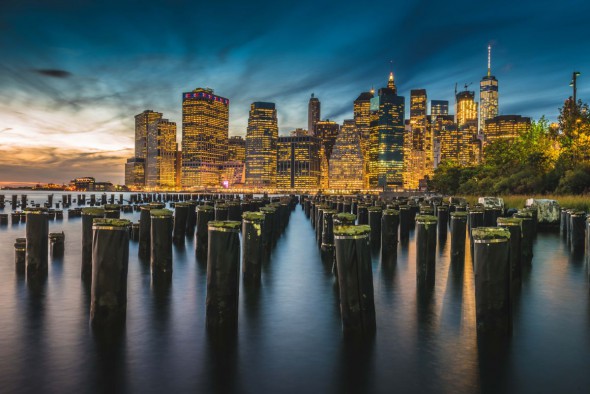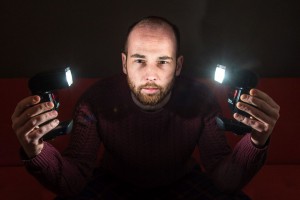Given the sheer number of images produced every day, is it possible to be an original photographer? No, but that's okay, reckons Ben Davis...

Is it still possible to create original photographs?
I recently read a prediction that over ONE TRILLION photographs will be captured in 2017. The total number of images stored on hard drives and other formats is expected to reach over 4.5 trillion.
It got me thinking – with such a brain-busting number of photos in existence, and more being created every day, is it still possible for a photographer to be original?
It’s true that many of the shots taken this year will be utilitarian pics, or the fairly banal snaps that clutter up our smartphones. But even among the more creative photos captured by “proper” cameras, most will bear strong resemblance to images that have been taken before, whether deliberately or inadvertently. The photographs I’ll be taking certainly will, and I’m willing to bet that most of yours will too.
Last year I added 147,362 images to my Lightroom library, and maybe took another few thousand on my phone, but I couldn’t really claim any of them are truly original.
I’d argue that it’s impossible to escape pre-existing influences and ideas when it comes to photography. People have been capable of creating images by capturing light one way or another for more than 200 years, and that comes on top of thousands of years of art history. We are constantly bombarded with images everywhere we go, filtering through into our subconscious.
A sentiment that has been expressed by psychologists, philosophers and dated Internet memes alike is: “What has been seen cannot be unseen.” There’s no sidestepping this, and I believe every decision we take in photography is a result of our past experiences – what we’ve learned, what we’ve witnessed and what we’ve admired – whether we consciously notice these influences or not. American author Chuck Palahniuk once wrote “You’re about as free to act as a pre-programmed computer,” and in truth I find it hard to disagree with him.
That doesn’t mean everything has already been done. Advances in technology can bring about new techniques and fresh images. Take modern sensors for example: you can record so much more detail in low light situations now than you could even ten years ago. This is an ongoing phenomenon: Henri Cartier-Bresson – the pioneer of street photography – was able to develop a new style of images after being introduced to the new Leica I, as it made photography much more portable and discreet in a way that was ideal for the street.
But even then, Cartier-Bresson was under the influence of everything that had gone before him. Something undoubtedly “new” still isn’t necessarily original; he was still standing on the shoulders of history, his work a progression of past ideas and a cocktail of previous creations.
Finding a voice
I don’t feel the need to be considered original with my photography. It always feels like a slur when something is labelled “unoriginal”, painting the creator as lazy. Originality is never required for success, and actually being original – if it’s possible – doesn’t automatically mean something is going to be any good.
I’d argue that what matters much more than originality in photography is creativity. It’s about generating your own interpretation of your vast sum of influences. It’s in between the gaps you can find your own photographic voice.
We all draw from the same pool of inspiration and influences. True originality is out of reach. But what we can do is strive to improve upon what has gone before.
A few months ago I went on holiday to New York. I’d previously seen a shot of rows of posts poking out from the East River, with Manhattan looming on the horizon, and I wanted to capture it. However, I wanted to go a little further, to try and better the shot that had inspired me. So I chose a different time of day in order to capture more of a mix between atmospheric and electronic light. I found a different composition and used a different shutter speed. The result was the image you see at the top of this post.
I was definitely inspired by the image I once saw, but my shot is different. It’s my attempt to be original, working with the constraints in which we shoot rather than against them.
Look on the bright side: your photography is still unique, even if ultimately it’s unoriginal. Almost every image is unique, whether it’s down to a change in the light, the season, the subject, or even just a facial expression.
These are moments in time – the stories you tell in your photographs are yours alone. The narrative is always unique, even if it is remarkably similar to countless other tales. I take the photos that I want to look at, and I don’t think you should ever feel embarrassed about emulating something you’ve seen before.
Follow your own path between your various influences and be sure to shoot with your own voice, and that, I reckon, is as close as you will get to finding your own originality.
Do you agree with Ben? Join the conversation on Facebook
About the Author

Ben Davis is an award-winning professional photographer with more than 10 years' experience in the industry. His internet home is www.cambridgeshireweddingphotography.com
Related articles
Editorial: People Skills – Do You Have Them?
Editorial: Will 4K Video Kill Stills Photography?
Editorial – Do You Know the Answer to One of the Most Important Questions in Photography?

